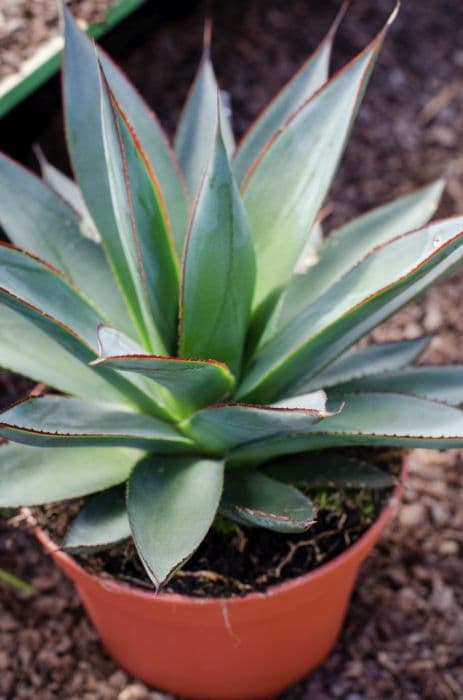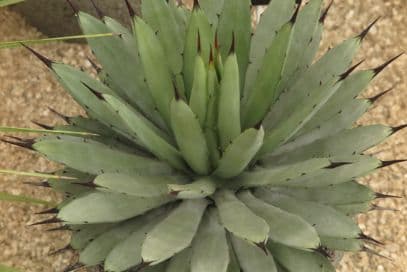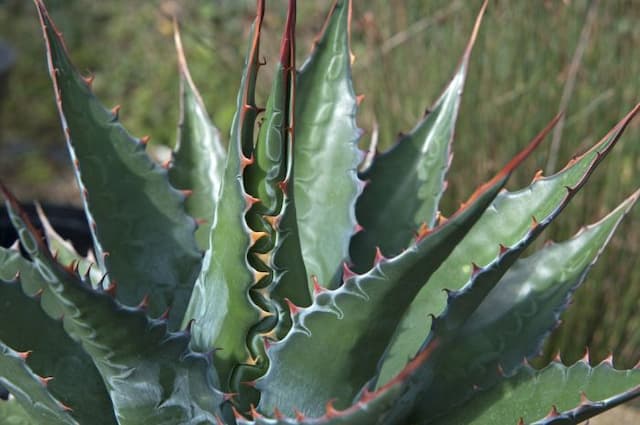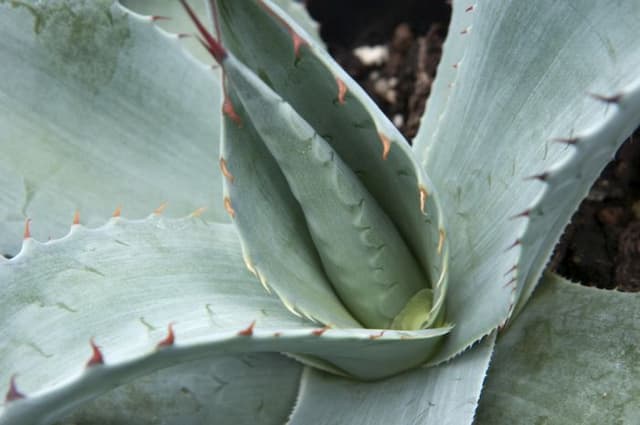Pregnant Onion Albuca shawii

ABOUT
Albuca shawii, commonly known as Shaw's Albuca, is a bulbous plant characterized by its slender, upright leaves that taper to a point. The leaves are often curled or twisted, adding to the whimsical and ornamental appeal of the plant. Its color is a bright, fresh green, making it stand out in any garden setting. During the blooming period, Shaw's Albuca produces dainty yellow flowers that are bell-shaped and hang in loose clusters. The blossoms have a sweet, vanilla-like fragrance that adds to the sensory experience of the plant. The flowers are marked with green stripes and enfolded by bracts, which are modified leaves that may take on a different appearance than the foliage. The overall visual effect of Shaw's Albuca is one of delicate beauty, with its combination of playful foliage and charmingly fragrant flowers.
About this plant
 Names
NamesSynonyms
Shaw's Albuca, Yellow Albuca
Common names
Ornithogalum shawii, Albuca maxima, Albuca rupestris.
 Toxicity
ToxicityTo humans
Albuca shawii, commonly known as the Albuca, is not widely recognized for its toxicity to humans. There is limited information available on the effects of this plant if ingested by humans. However, since comprehensive data on its toxicity is lacking, it is generally advisable to avoid eating or handling any unknown plants without proper knowledge, as they may contain compounds that can cause adverse reactions. If someone ingests Albuca and poisoning is suspected, it is important to seek medical attention promptly. Symptoms of plant poisoning can include a range of effects from mild gastrointestinal upset such as nausea, vomiting, and diarrhea to more severe reactions depending on the plant's specific toxins and the amount ingested.
To pets
The Albuca is not specifically listed as toxic to pets, but, as with humans, information on the toxicity of Albuca shawii to pets is not widely available. It's always a good precaution to prevent pets from ingesting this or any unknown plants, as they may contain substances that can cause illness. Symptoms of poisoning in pets might include vomiting, diarrhea, drooling, or more serious conditions depending on the specific toxins involved and the size of the pet. If a pet ingests part of an Albuca plant and shows signs of distress or illness, contact a veterinarian as soon as possible.
 Characteristics
CharacteristicsLife cycle
Perennials
Foliage type
Deciduous
Color of leaves
Green
Flower color
Yellow
Height
1-2 feet (30-60 cm)
Spread
1 feet (30 cm)
Plant type
Bulb
Hardiness zones
9
Native area
South Africa
Benefits
 General Benefits
General Benefits- Aesthetic appeal: Albuca shawii, also known as Slime Lily, has attractive foliage and unique, fragrant yellow flowers that add visual interest to gardens and landscapes.
- Drought tolerance: It is well-suited to dry climates or water-wise gardens due to its ability to withstand periods of drought.
- Low maintenance: This plant requires minimal care once established, making it ideal for gardeners seeking low-maintenance options.
- Attracts wildlife: The flowers of Slime Lily can attract pollinators like bees and butterflies, supporting local biodiversity.
- Adaptability: Albuca shawii can adapt to a range of soil types, provided they have good drainage.
- Seasonal interest: It provides seasonal blooms, typically in spring, offering a delightful display when many other plants are not yet in flower.
 Medical Properties
Medical PropertiesThis plant is not used for medical purposes.
 Air-purifying Qualities
Air-purifying QualitiesThis plant is not specifically known for air purifying qualities.
 Other Uses
Other Uses- Ornamental purposes: Albuca shawii is often grown for its attractive flowers and unique, curly leaves which add an aesthetic appeal to gardens and indoor settings.
- Cut flowers: The blooms of Albuca shawii can be used in floral arrangements, where their unique shape and interesting fragrance can be appreciated up close.
- Xeriscaping: As a drought-resistant plant, Albuca shawii is suitable for xeriscape gardens, helping to reduce the need for watering in arid climates.
- Educational tool: Albuca shawii can be used in botanical education to teach plant adaptation strategies, given its succulent leaves that store water.
- Photography subject: The distinctive spiral leaves and yellow-green flowers of Albuca shawii make it a favorite subject for photographers interested in plant and nature photography.
- Habitat support: When planted outdoors, Albuca shawii can provide shelter and micro-habitats for small insects and other fauna within a garden ecosystem.
- Container gardening: Due to its compact size and low maintenance requirements, Albuca shawii is ideal for container gardening, including balconies and patios.
- Seasonal decoration: Albuca shawii can be used as a living decoration during the spring and early summer when it is in bloom.
- Bioindicator: In some contexts, Albuca shawii might be used as a bioindicator plant to monitor the health of a particular environment, due to its sensitivity to environmental changes.
- Ritualistic purposes: Some plants have cultural significance and may be used in traditional ceremonies or rituals, though specific uses of Albuca shawii in this context would require verification from cultural sources.
Interesting Facts
 Feng Shui
Feng ShuiThe Albuca is not used in Feng Shui practice.
 Zodiac Sign Compitability
Zodiac Sign CompitabilityThe Albuca is not used in astrology practice.
 Plant Symbolism
Plant Symbolism- Resilience - Albuca shawii thrives in tough conditions, symbolizing the ability to withstand adversity.
- Adaptability - With its capacity to adapt to its environment, it represents flexibility and the willingness to adjust.
- Uniqueness - The unusual spiral leaves of the plant symbolize individuality and unique beauty.
- Joy - The bright yellow flowers can be seen as symbols of happiness and cheerfulness.
- Simplicity - The plant's straightforward growing requirements stand for simplicity and an appreciation for the basics.
 Water
WaterAlbuca shawii, commonly known as Slime Lily, prefers consistent moisture during its growing season. Water the plant thoroughly, allowing the water to penetrate the soil until it runs out of the drainage holes, indicating that the soil is fully saturated; however, be careful not to let the plant sit in water as this can lead to root rot. During the active growth period in spring and summer, water Slime Lily once a week with about 16 ounces of water. Reduce watering in the fall and give only enough to prevent the soil from completely drying out, as the plant enters a period of dormancy in winter.
 Light
LightSlime Lily thrives in bright, indirect sunlight. Place the plant in a location where it can receive plenty of light without being exposed to the harsh rays of the midday sun, such as near an east or west-facing window. Adequate light is crucial for the plant to bloom and maintain healthy growth.
 Temperature
TemperatureSlime Lily prefers moderate temperatures and can typically survive in a range between 50 to 75 degrees Fahrenheit. To thrive, it should ideally be kept in an environment that maintains a temperature around 60 to 70 degrees Fahrenheit. Protect the Slime Lily from temperatures dropping below 50 degrees Fahrenheit as cold temperatures can damage the plant.
 Pruning
PruningPruning the Slime Lily is essential to remove spent flowers and dead or yellowing leaves, which promotes healthy growth and appearance. It is best to prune the Slime Lily after it has finished flowering, typically in the late summer or early fall. Regularly checking and trimming off any unsightly or damaged parts every few months will help maintain its shape and vigor.
 Cleaning
CleaningAs needed
 Soil
SoilAlbuca shawii, commonly known as Slime Lily, thrives in a well-draining soil mix, consisting of equal parts loam, sand, and compost. The best soil pH for Slime Lily should be slightly acidic to neutral, ranging from 6.0 to 7.5. A cactus or succulent potting mix, often already pH-balanced, is an excellent starting point, to which perlite or pumice can be added for improved drainage.
 Repotting
RepottingSlime Lily should be repotted every two to three years or when it outgrows its container. Repotting is best done in the late winter or early spring just before the onset of the growing season, allowing the plant to establish in its new pot.
 Humidity & Misting
Humidity & MistingSlime Lily prefers moderate to high humidity levels, ideally ranging between 40% and 60%. Although it can adapt to lower humidity, maintaining these levels will promote healthier growth and flowering.
 Suitable locations
Suitable locationsIndoor
Provide bright, indirect light and well-draining soil.
Outdoor
Plant in partial shade with well-draining soil.
Hardiness zone
9-11 USDA
 Life cycle
Life cycleAlbuca shawii, commonly known as Shaw's Albuca, begins its life cycle as a seed, which, once sown in well-drained soil and with adequate warmth, will germinate. After sprouting, it develops into a seedling with fleshy, narrow leaves, during which time it establishes a small bulb underground. It then enters a vegetative stage where growth and bulb development continue, and the plant accumulates nutrients. Shaw's Albuca may go dormant during periods of drought or extreme cold, retreating to the bulb form, which allows it to survive adverse conditions. Upon the arrival of favorable conditions, such as moist soil and warmer temperatures, it re-emerges, producing flowering stalks bearing yellowish-green flowers with fringed margins, usually in the spring or early summer. After pollination, typically by insects, seeds are produced and dispersed, completing the life cycle and allowing for a new generation to begin.
 Propogation
PropogationPropogation time
Spring-Early Summer
Propogation: Albuca shawii, commonly known as the Slime Lily, is often propagated through the division of bulbs, which is considered the most popular method. The best time to propagate the Slime Lily by bulb division is in the late summer or early fall, just after the plant has finished flowering and the foliage begins to die back. To propagate, gently unearth the clump of bulbs and separate them by hand, ensuring that each division has at least one growth point. Plant the separated bulbs in well-draining soil at a depth of about 2 to 3 inches (5 to 7.6 cm) and space them approximately 8 inches (20 cm) apart to allow for adequate growth. Water the newly planted bulbs lightly to settle the soil around them. This method of propagation is advantageous because it is straightforward and usually results in flowering plants within a year or two.









